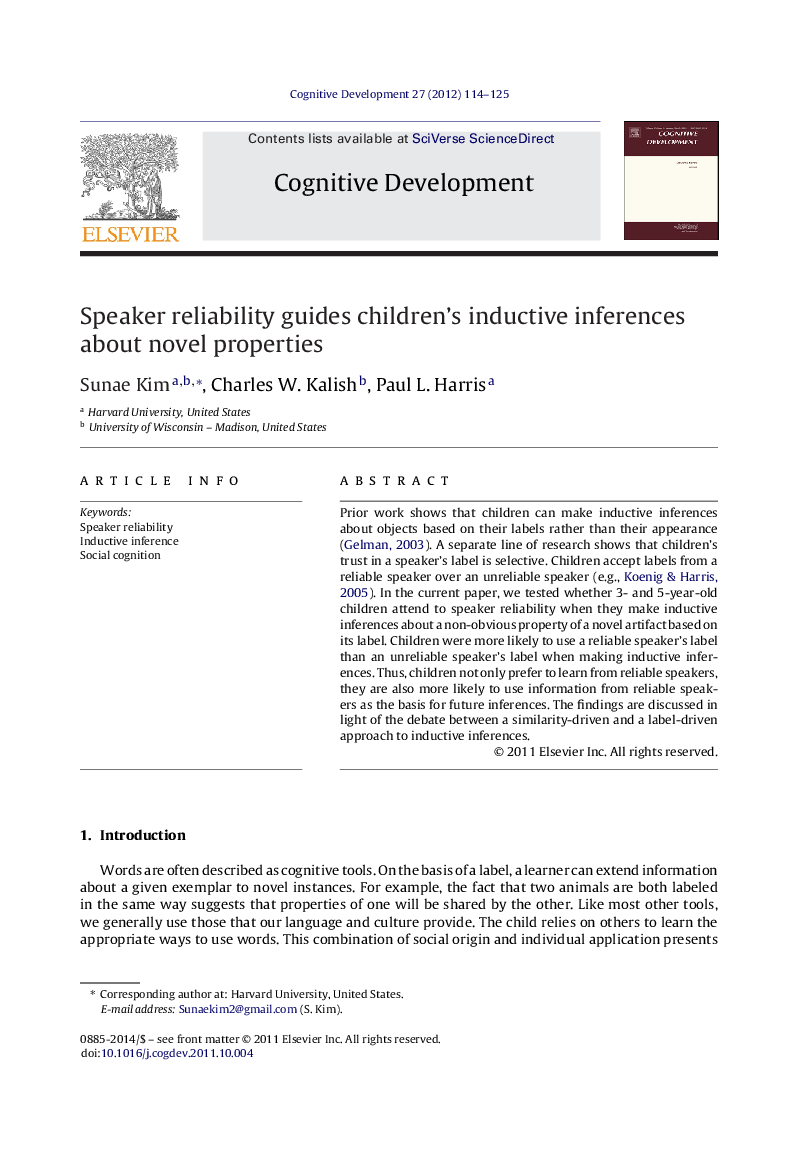| کد مقاله | کد نشریه | سال انتشار | مقاله انگلیسی | نسخه تمام متن |
|---|---|---|---|---|
| 916583 | 918867 | 2012 | 12 صفحه PDF | دانلود رایگان |

Prior work shows that children can make inductive inferences about objects based on their labels rather than their appearance (Gelman, 2003). A separate line of research shows that children's trust in a speaker's label is selective. Children accept labels from a reliable speaker over an unreliable speaker (e.g., Koenig & Harris, 2005). In the current paper, we tested whether 3- and 5-year-old children attend to speaker reliability when they make inductive inferences about a non-obvious property of a novel artifact based on its label. Children were more likely to use a reliable speaker's label than an unreliable speaker's label when making inductive inferences. Thus, children not only prefer to learn from reliable speakers, they are also more likely to use information from reliable speakers as the basis for future inferences. The findings are discussed in light of the debate between a similarity-driven and a label-driven approach to inductive inferences.
Journal: Cognitive Development - Volume 27, Issue 2, April–June 2012, Pages 114–125